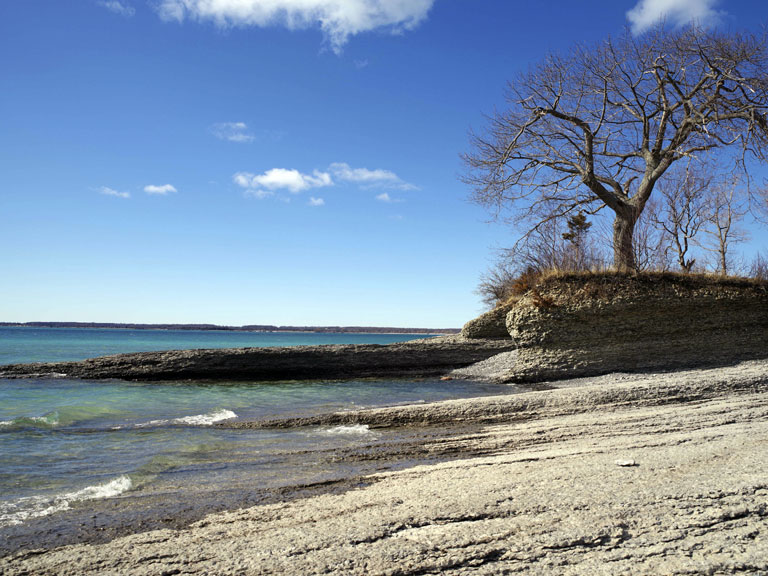County News
A new initiative

New group aims to protect biodiversity along County’s south shore
The County’s south shore is the last remaining significant amount of undeveloped shoreline on the north side of Lake Ontario. Part of it has been designated an Important Bird Area (IBA) as it is situated along the main spring and fall migration routes. It is home to a number of threatened or at-risk species, including the Blanding’s turtle, the eastern meadowlark and the bobolink, and the area at Prince Edward Point has been designated as in international monarch butterfly reserve since 1995. The near shore areas provide staging grounds for millions of migrating waterfowl, and is the winter habitat for an estimated 200,000 longtailed ducks. The area south of Army Reserve Road and extending out to Prince Edward Point has been well documented as a biodiverse area, but it is essentially unprotected from development that could have a negative impact on the ecosystem. “The Ostrander Point land block and the Point Petre land block have no protection whatsoever,” says John Hirsch. “In fact, the Province historically has used Crown land as bases for industrial development, logging, mining and these kinds of things. There’s no protection at all.”

John Hirsch speaks at the inaugural meeting of the South Shore Joint Initiative on Saturday at Bloomfield Town Hall. Hirsch is one of the founding members of the group.
In October 2017, a number of environmental and nature groups, including the Prince Edward County Field Naturalists, Ontario Nature and Nature Canada, held a conference to explore what needed to be done to protect the south shore IBA. One recommendation from that conference was to establish a local group to lead the work. This led to the founding of the South Shore Joint Initiative (SSJI), and the group held its inaugural meeting on Saturday afternoon at Bloomfield Town Hall. “The South Shore Joint Initiative is, we believe, a unique venture in the County,” says Hirsch. “We’re an organization committed to developing partnerships with other organizations and individuals who share our vision for the south shore in Prince Edward County.” The group is seeking to protect an area from Soup Harbour to Prince Edward Point, encompassing 26 square kilometres of land and 65 sq. km of the near shore, with a mission of maintaining or increasing the biodiversity of the terrestrial and marine ecosystems, and protecting public lands from ecologically harmful commercial development.
The protected area will be considered part of Canada’s 2020 Biodiversity Targets, which has a goal of protecting 17 per cent of the nation’s terrestrial areas and inland waters. The group is adamant that it will not seek to change the current use of the area, which includes residential homes, farming, eco-tourism, ATV and snowmobile trails and recreational or commercial fishing. Instead, it is focusing on preservation of habitat. “Protection of habitat must be permanent and have in place control mechanisms to prevent unnecessary development,” says Hirsch. “[We] preserve habitat diversity by allowing plants and animals and many species a place to live, breed and interact. The interdependence of all living things, including humans, supports life on earth. The survival of all species is linked to healthy ecosystems.”
In addition to protecting land from ecologically harmful development, the group has a number of other objectives. These include expansion of the IBA to encompass Main Duck Island and promoting a conservation strategy with the federal and provincial governments. “A very important objective is to create and carry out educational public awareness activities to communicate the importance of the IBA, locally, nationally and, hopefully, globally,” adds Hirsch.
For more information about SSJI, visit the website at ssji.ca. Membership is $10 for individuals and $20 for a family. It is federally registered as a non-profit, but is not a charity as its mandate is to carry out advocacy with governments and to influence policy, regulations and legislation.

Comments (0)